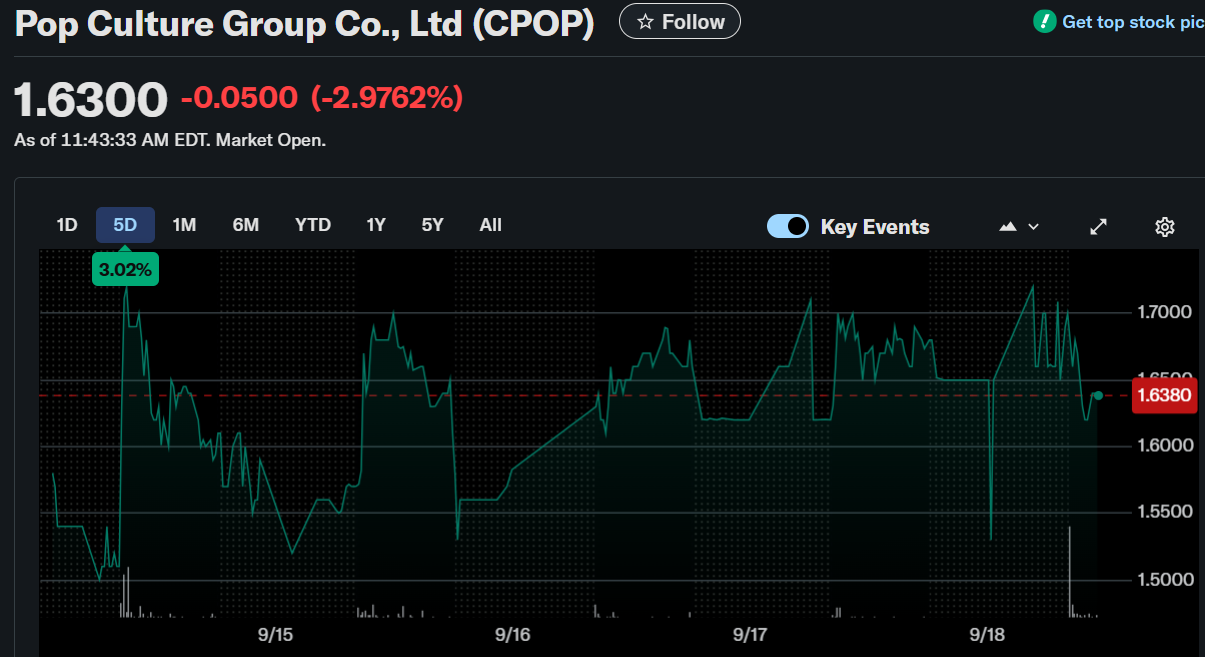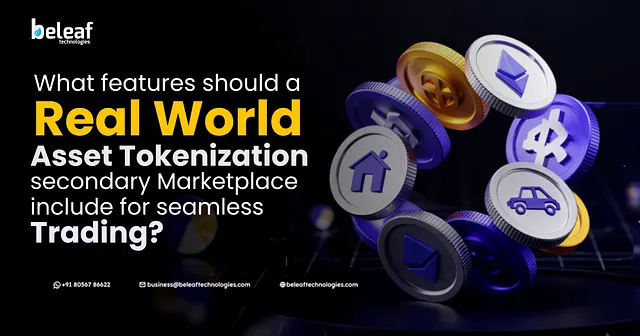Pop Culture Group (CPOP) Stock: Dips as $33M Bitcoin Bet Sparks Web3 Pivot
TLDR
- CPOP dives into Web3 with $33M Bitcoin buy, reshaping entertainment tech.
- Pop Culture Group bets on crypto to transform the future of fan engagement.
- CPOP fuels Web3 push with Bitcoin & Ethereum to lead digital entertainment.
- $33M Bitcoin move marks CPOP’s bold leap into blockchain and artist equity.
- From hip-hop to crypto: CPOP backs Bitcoin, Ethereum in Web3 evolution.
Pop Culture Group Co., Ltd (NASDAQ: CPOP) shares declined nearly 3% after early volatility, stabilizing around $1.63.

Pop Culture Group (CPOP)
The movement followed the company’s announcement of a $33 million Bitcoin investment and a strategic pivot into Web3. This decision marks a turning point in the company’s efforts to blend entertainment with digital innovation.
CPOP Bets $33 Million on Bitcoin to Fuel Web3 Vision
CPOP has allocated $33 million toward acquiring 300 Bitcoins as part of its strategic expansion into digital assets. The company confirmed the move aligns with its broader plan to embrace Web3-focused investments. It seeks to transform its entertainment model into a more interactive and blockchain-driven experience.
By channeling funds into Bitcoin, CPOP aims to anchor its new Web3 initiatives with a stable digital asset. This shift supports its ambition to lead a digital entertainment ecosystem while managing risk through well-known crypto holdings. The Bitcoin purchase also acts as the foundational step toward a diversified crypto fund.
CPOP intends to modernize how users engage with entertainment by integrating asset ownership models. This change would enable digital assets to appreciate over time, unlike traditional consumption-based experiences. The Bitcoin acquisition sends a clear message that CPOP is committed to this future.
Ethereum Joins the Fund’s Expansion Strategy
CPOP’s cryptocurrency fund will also include Ethereum (ETH), positioning it as a flexible and utility-focused asset within the portfolio. Ethereum’s smart contract capabilities make it a strategic choice for a company seeking to build a Web3 entertainment infrastructure. Its widespread adoption and development potential align with CPOP’s vision of scalable, blockchain-based content delivery.
The company plans to leverage Ethereum’s ecosystem to support interactive platforms and community-driven media experiences. Ethereum’s DeFi and NFT support could play a key role in future artist partnerships and content monetization models. This complements the company’s core operations in artist management and digital content.
Ethereum investments offer technological synergy with CPOP’s existing entertainment operations, including music, film, and live performances. These allow Ethereum-based features like token gating and digital rights to integrate seamlessly. The inclusion of ETH signals CPOP’s readiness to explore utility beyond financial speculation.
BOT and Artist Projects Round Out Diversified Fund
The crypto fund also includes BOT and will target artist incubation and equity opportunities. Though less mainstream, BOT offers potential strategic value for specific entertainment-related use cases. CPOP is evaluating BOT’s relevance in building niche fan economies or facilitating artist engagement.
The fund will back artist management and equity projects that align with company strategy. These investments seek to identify high-growth talent and develop them using blockchain-enabled models. The approach fits CPOP’s background in street dance and hip-hop-focused talent development.
By combining cryptocurrency assets with artist and equity investments, the company is crafting a multifaceted digital entertainment ecosystem. This blended model creates opportunities for recurring value through content ownership, rights, and fan participation. It reflects CPOP’s ambition to modernize the entertainment experience across all its platforms.
The post Pop Culture Group (CPOP) Stock: Dips as $33M Bitcoin Bet Sparks Web3 Pivot appeared first on CoinCentral.
You May Also Like

South Korea’s $657 Million Exit from Tesla Signals a Big Crypto Pivot

CME to launch Solana and XRP futures options on October 13, 2025
